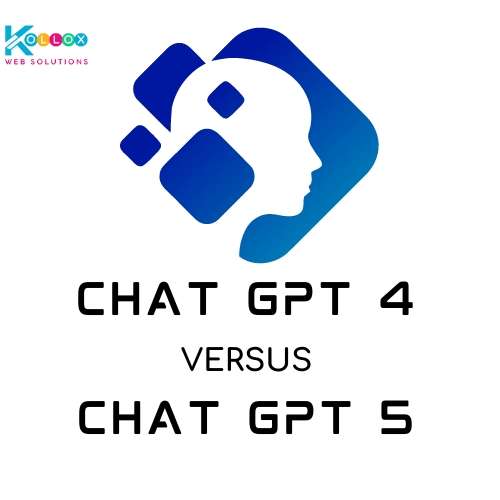
Anticipating GPT-5: What Lies Ahead?
In June 2020, the tech world witnessed the advent of GPT-3, a groundbreaking AI model with an exceptional ability to comprehend and execute complex tasks. This marked a pivotal moment in artificial intelligence, setting the stage for the subsequent release of GPT-4 in March 2023. GPT-4, a leap forward in human-AI interaction, showcased enhanced contextual awareness and personalized assistance, reshaping the landscape of AI-powered interactions.
However, the journey doesn’t end with GPT-4. Excitement reverberates within the AI community as discussions about GPT-5 gain momentum. Expected to refine and surpass the capabilities of its predecessors, GPT-5 is shrouded in anticipation. While specific details about its functionalities remain undisclosed, projections suggest significant strides in natural language processing.
Despite OpenAI’s official silence on GPT-5, enthusiasts speculate on the possibility of its release in the near future. Building on the rapid release of GPT-4 in November 2022, industry watchers speculate a potential debut for GPT-5 in 2024.
If GPT-5 indeed emerges, it’s poised to destroy GPT-4 in terms of power and capabilities. Envision a model generating more realistic, coherent text and seamlessly tackling complex tasks such as language translation or creative content generation.
Expectations surrounding GPT-5 have given rise to various speculations, though none have received official validation from OpenAI. These include assertions that GPT-5 will be ten times more powerful than its predecessor, capable of producing indistinguishable text from human writing, perfect language translation, and the generation of diverse creative content.
Cautious optimism prevails as the tech community eagerly awaits official announcements, recognizing the importance of relying on verified information rather than unfounded rumors.
The Road Ahead: Unveiling GPT-5’s Potential
Anticipation surrounding GPT-5’s 2024/2025 release date intensifies, with industry experts pondering its graphical capabilities, unexplored in GPT-4. The extensive computational power and parameters it promises hint at transformative impacts on natural language processing and text generation.
As we approach the launch, GPT-5’s potential becomes a focal point of discussions. Expectations are high, foreseeing a transformative approach to understanding and utilizing AI. GPT-5 aims to reach a realm where it comprehends and responds with a depth mirroring human comprehension and creativity.
Language Processing Unleashed: A New Era
Standing on the hedge of a new era in language processing, GPT-5 aims to comprehend a broader spectrum of linguistic nuances, promising a more sophisticated tool for language translation services and applications dependent on profound language understanding.
Understanding language at unprecedented levels, GPT-5 is set to recognize and respond to sarcasm and irony more effectively, revolutionizing conversational AI. Its creative potential extends beyond GPT-4, offering more varied and imaginative responses, making it a valuable tool for diverse tasks, from aiding politicians in crafting speeches to assisting individuals in day-to-day activities like devising recipes based on available ingredients.
The Global Anticipation for GPT-5
The release of GPT-4, although recent, has swiftly shifted conversations towards the potential of GPT-5. Global eagerness prevails, showcasing a collective anticipation to witness a tool that promises to fundamentally alter our interaction with technology.
Central to discussions is the expectation of GPT-5’s integration of graphical capabilities, an aspect not realized in GPT-4. The tech community eagerly anticipates how GPT-5 could merge language processing capabilities with graphical outputs, potentially paving the way for more interactive and enriched user experiences.
Looking Ahead: Opportunities and Challenges
While GPT-5 brings forth a wave of advancements, it also raises concerns, especially in industries like journalism, where the potential for comprehensive AI-generated articles could impact human roles. As we navigate toward a future where content creation is predominantly AI-driven, considerations about the impact on traditional job markets become increasingly relevant.
Despite potential challenges, the overarching belief is that GPT-5 could foster a more cohesive society. By enhancing understanding and communication across various sectors, including education and healthcare, it aims to build bridges and encourage a harmonious blend of technology and human intellect.
Charting the Future with GPT-5
GPT-5 emerges as a monumental leap in AI evolution, promising to redefine language processing,
creativity, and human-AI interaction. While the excitement is palpable, a responsible approach to its utilization is paramount, acknowledging both its transformative potential and the need for ethical considerations.
As we stand on the brink of GPT-5’s release, the tech community eagerly anticipates a future where AI and humanity coexist in a symbiotic and balanced relationship, unlocking new possibilities and charting the course for the next frontier of artificial intelligence.
Disclaimer:
As an Amazon Associate I earn from qualifying purchases. This post may contain affiliate links which means I may receive a commission for purchases made through links.



